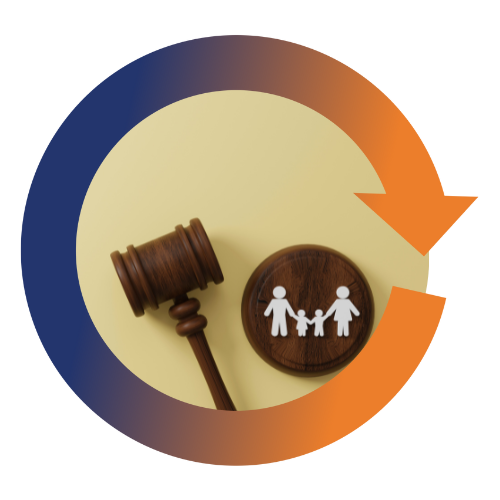2024 Mid-Year Legal Updates: Areas of Focus on National and State Levels
August 20th, 2024

The legal landscape is constantly evolving, with new regulations, court decisions, and societal shifts impacting businesses across the country. As we pass the midpoint of 2024, it’s essential to stay informed about the latest developments in employment law. This blog post will provide an overview of key areas of focus for the Equal Employment Opportunity Commission (EEOC) and recent Supreme Court decisions, as well as emerging trends in state law.
Supreme Court Decisions Shaping the Workplace
Several recent Supreme Court decisions have had a significant impact on employment law.
Chevron Overturned
The Supreme Court’s decision to overturn the Chevron deference doctrine, which gave federal agencies broad authority to interpret ambiguous statutes, could have far-reaching implications for administrative law, including employment law.
Muldrow v. City of St. Louis (Title IX)
This case addressed the scope of Title IX protections for sexual harassment and discrimination in educational settings. The decision clarified certain aspects of Title IX liability and could have implications for workplace harassment claims.
Mobley v. Workday (Liability for Vendors)
The Court’s ruling in Mobley v. Workday addressed the liability of vendors for employment discrimination claims. The decision clarified the circumstances under which vendors can be held liable for discriminatory actions taken by their clients.
Yanick v. Kroger (ADA)
This case involved the Americans with Disabilities Act (ADA) and the definition of a “disability.” The Court’s ruling clarified certain aspects of the ADA and could impact future disability discrimination claims.
Su v. Bevins & Son (Retaliation)
The Supreme Court’s decision in Su v. Bevins & Son addressed the standard for retaliation claims under Title VII of the Civil Rights Act of 1964. The ruling clarified the causation element of retaliation claims.
State Law Trends: A Patchwork of Regulations
In addition to federal regulations, employers must also comply with a patchwork of state laws. Some of the most significant trends in state employment law include:
Pay Transparency
A growing number of states have enacted pay transparency laws, requiring employers to disclose salary ranges or wage information to job applicants or employees. As of mid-2024, at least 12 states have implemented such laws.
Paid Leave
Paid leave laws continue to expand across the country, with many states offering paid family and medical leave benefits. Some states have also enacted laws related to pregnancy loss leave.
Credit and Background Checks
Several states have enacted restrictions on the use of credit and background checks in employment decisions, aimed at reducing barriers to employment for individuals with criminal records or poor credit histories.
AI
Some states are beginning to explore legislation related to the use of AI in employment, including regulations to prevent bias and discrimination.
Noncompete Agreements
There is a growing movement to restrict the use of noncompete agreements, with several states enacting laws to limit or ban these contracts.
Captive Audience Meetings
Some states have enacted laws restricting employers from holding mandatory meetings to discuss political or other non-work-related topics, often referred to as “captive audience meetings.”
EEOC: A Focus on Vulnerable Workers and Emerging Issues
The EEOC has made significant strides in recent years in protecting the rights of workers. This year, the agency has continued to prioritize several key areas.
Vulnerable and Underserved Workers and Their Communications
The EEOC remains committed to safeguarding the rights of vulnerable and underserved workers. This includes a focus on improving communication channels and accessibility for individuals with disabilities, as well as addressing discrimination faced by workers in agriculture, domestic service, and other industries.
AI and Other Technologies
The rapid advancement of artificial intelligence and other technologies has raised concerns about potential biases and discrimination in the workplace. The EEOC is closely monitoring these developments and exploring ways to ensure that AI is used ethically and fairly.
Gender and Sexual Orientation
The EEOC continues to address issues related to gender and sexual orientation discrimination. This includes enforcing protections for transgender and gender non-conforming individuals, as well as preventing harassment and discrimination based on sexual orientation.
Eliminating Barriers in Recruitment and Hiring
The agency is working to eliminate barriers to employment, such as criminal background checks and employment tests that have a disparate impact on protected groups. The EEOC is also focused on promoting fair hiring practices and reducing unconscious bias in the recruitment process.
Equal Pay
The fight for equal pay continues to be a top priority for the EEOC. The agency is investigating and litigating cases of pay discrimination based on sex, race, and other protected characteristics.
Systematic Harassment
The EEOC is taking a comprehensive approach to addressing harassment in the workplace, focusing on preventing and addressing systemic issues rather than isolated incidents. This includes working with employers to develop effective harassment prevention policies and training programs.
Conclusion
The employment law landscape is complex and constantly changing. By staying informed about the latest developments at the federal and state levels, employers can mitigate risks, avoid costly litigation, and create a positive and inclusive workplace.
Are you interested to find out if any of the above rulings, changes, or trends specifically impacts your business? MP can help you navigate these challenges by providing expert guidance and support. We can help you stay compliant with federal and state laws, develop effective policies and procedures, and manage potential legal issues. Let’s talk about how we can help your business thrive in this evolving legal environment.
Make sure to subscribe to MP’s blog and stay on top of the most up-to-date news and trends in the business realm.
Stay Up-To-Date on Compliance & Trends
powered by Advanced iFrame. Get the Pro version on CodeCanyon.
Recent Posts
- Seasonal Workforce Simplified: A Blueprint for Employers
- The Payroll Customer Service Struggle: What’s Really Going On?
- Navigating Workforce Management: Challenges, Strategies, and Solutions
- The Importance of Training in Today’s Workplace: A Holistic Approach
- Achieving and Maintaining Compliance in 2025: Key Insights for Employers
Categories
- ACA (10)
- AI (5)
- BizFeed (6)
- Business Strategy (119)
- COBRA (5)
- Compliance (191)
- COVID-19 (92)
- Diversity (12)
- eBooks (19)
- Employee Engagement (33)
- Employee Handbooks (24)
- ERTC (29)
- FFCRA (7)
- HR (305)
- MP Insider (13)
- Payroll (112)
- PFML (9)
- PPP (24)
- PTO (5)
- Recruiting (53)
- Remote Work (39)
- Return to Work (32)
- Unemployment (1)
- Wellness (22)
Archives
- March 2025
- February 2025
- January 2025
- December 2024
- November 2024
- October 2024
- September 2024
- August 2024
- July 2024
- June 2024
- May 2024
- April 2024
- March 2024
- February 2024
- January 2024
- December 2023
- November 2023
- October 2023
- July 2023
- June 2023
- May 2023
- April 2023
- March 2023
- January 2023
- December 2022
- October 2022
- September 2022
- August 2022
- July 2022
- June 2022
- May 2022
- April 2022
- March 2022
- February 2022
- January 2022
- December 2021
- November 2021
- October 2021
- September 2021
- August 2021
- July 2021
- June 2021
- May 2021
- April 2021
- March 2021
- February 2021
- January 2021
- December 2020
- November 2020
- October 2020
- September 2020
- August 2020
- July 2020
- June 2020
- May 2020
- April 2020
- March 2020



